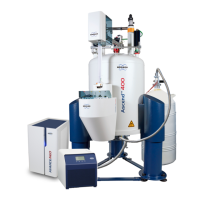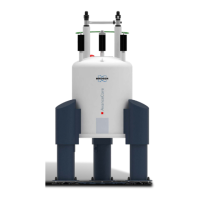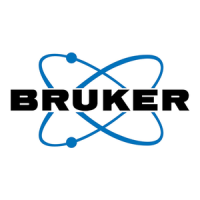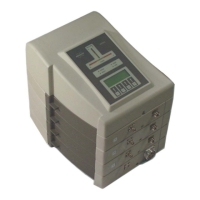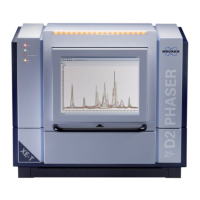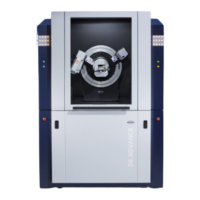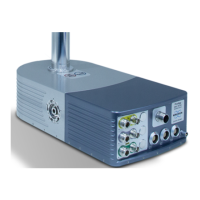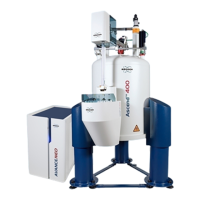
Do you have a question about the Bruker NMR AVANCE NEO Systems and is the answer not in the manual?
| Magnet Type | Superconducting |
|---|---|
| Console Type | AVANCE NEO |
| Software | TopSpin |
| Magnetic Field Strength | 400 MHz to 1.2 GHz |
| Digital Receivers | Multiple Digital Receivers |
| Lock Channel | Digital lock system |
| Probe Compatibility | Broad range of probes, including solution-state, solid-state, and micro-imaging probes |
| Temperature Control | Variable temperature control |
| Nuclei Support | 1H, 13C, 15N, 31P |
| Automation Compatibility | SampleJet |
| Cooling System | Cryoplatform |
| Digital Receiver Technology | Direct digital detection with oversampling and advanced filtering |
Bruker's commitment to product improvement and documentation quality, with a right to change specifications.
Explains safety symbols and indicative words used to express hazard levels in the manual and on labels.
Details the purpose, applications, and limitations of AVANCE NMR spectrometer systems.
Explains the manual's aim to provide quick access to safety information for the Avance system.
Discusses hazards related to strong magnetic fields and necessary safety precautions.
Covers safety aspects related to the use of cryogenic liquids like helium and nitrogen.
Outlines safety precautions for electrical components and grounding measures.
Advises users to be aware of hazards associated with chemical samples they are working with.
Mentions compliance with CE Declaration of Conformity for hardware units and peripheral systems.
Specifies permissible ambient temperature, altitude, and relative humidity for the system.
Details various safety signs and labels found on or around the spectrometer system.
Provides conversion factors for SI units to US standard units used within this manual.
General advice for users to check equipment condition regularly and inform service of abnormalities.
Explains the importance of grounding and how to achieve potential equalization for safety.
Safety guidelines for the spectrometer console, including power connection and safe movement.
Safety precautions for the AVANCE NEO AQS system, including emergency shutdown and personnel safety.
Safety information for the BSMS/2 system, covering emergency shutdown and personnel safety.
Safety considerations for transmitters, including RF signal hazards and safety labels.
Discusses hazards related to strong magnetic fields and their attractive forces on materials.
Explains the effects of active shielding on stray magnetic fields and their gradients.
Discusses the effects of magnetic fields on electronic, electrical, and mechanical medical implants.
Covers potential hazards from ferromagnetic surgical implants and eddy currents.
Details how magnetic fields can affect the operation of various equipment.
Lists safety checks and precautions to be taken before energizing the magnet.
Lists safety procedures and precautions to be followed after energizing the magnet.
Provides general safety guidelines for magnet site locations and hazard awareness.
Defines requirements for controlled access areas to manage stray fields.
Provides guidelines for safely handling liquid helium and liquid nitrogen.
Details procedures and safety precautions for refilling liquid nitrogen.
Details procedures and safety precautions for refilling liquid helium.
Outlines safety rules concerning ventilation for cryogenic systems and magnet rooms.
Information for personnel working near NMR systems regarding safety and emergency procedures.
First aid measures for contact with cold helium or nitrogen gas.
Describes the emergency shutoff procedure for the CryoCooling Unit.
Safety information for personnel working with or near CryoProbe systems.
Safety precautions for handling pressurized helium gas cylinders and hoses.
Electrical safety compliance and warnings for the CryoCooling Unit.
Safety guidelines for handling and operating the CryoProbe equipment.
Safety information for personnel working with or near CryoProbe Prodigy systems.
First aid measures for contact with cold helium or nitrogen gas.
Information about Bruker BioSpin Group, its locations, and contact details.
Contact information for Bruker's NMR service centers and hotlines.
